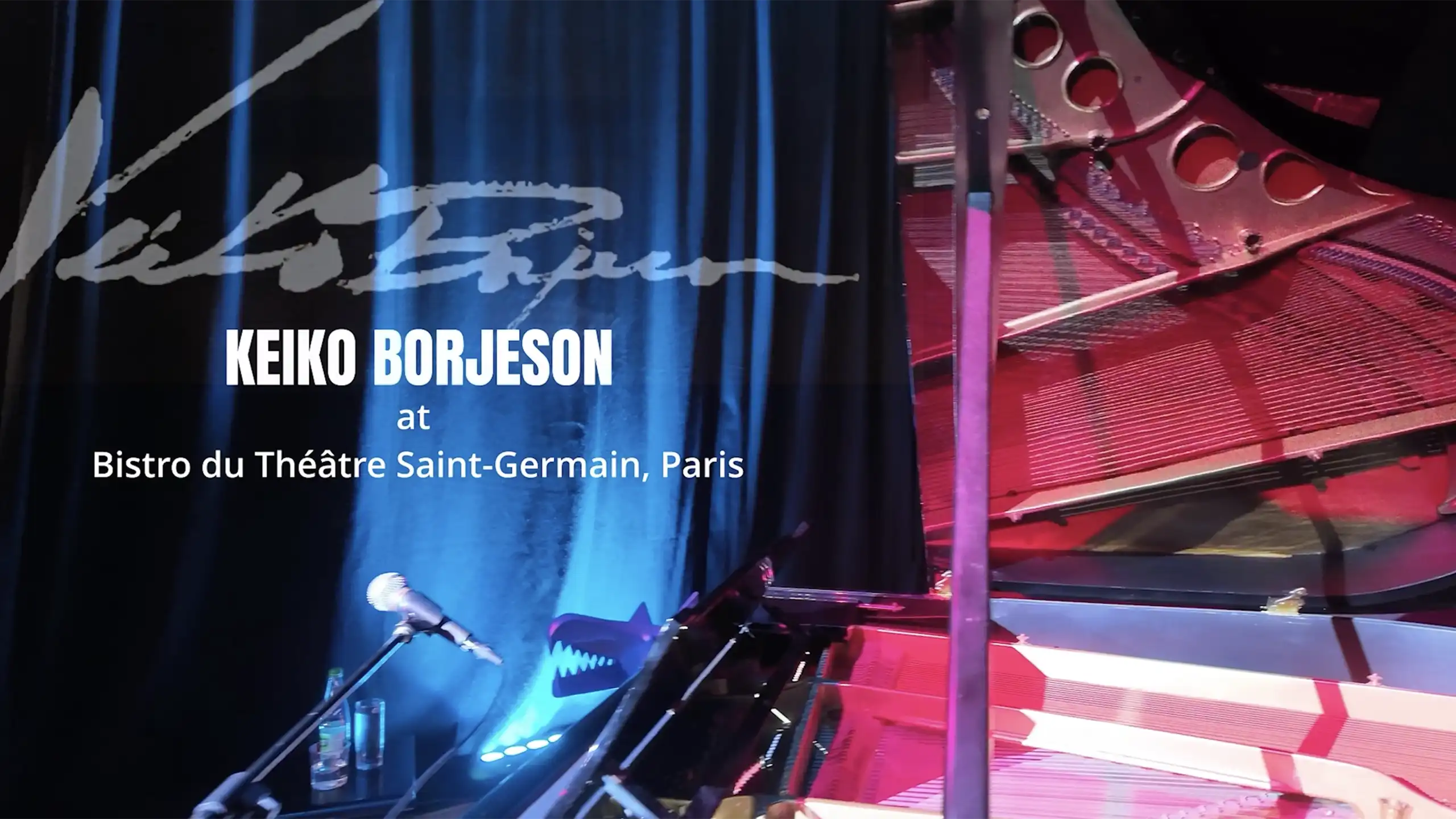

Editor-In-Chief
MeeKar Lim
International Fashion Editor
Suna Moya
Editor-At-Large
Zhang XiaoXiao

Please contact:
media-works@qcegmag.com
or
WeChat:QCEGMAG_Contact
QCEG MAG is a publication covering a selection of news in fashion, beauty, accessories, celebrities, LIVING ARTS, sports TRAVELS and relating videos around the world. Our portal is currently available in English and Chinese Languages for our international readers & viewers.
Get to know our professional team and their passionate creativity at QCEGPro.com



Paris held its breath as Keiko Börjeson, the Japanese jazz phenomenon, stepped onto a French stage for the very first time on 13 June 2025. Her debut unfolded at the legendary Bistrot Saint-Germain — a venue long regarded as a crossroads of art, culture, and timeless elegance. (Bistro Saint-Germain Paris bistrosaintgermain ) This was no ordinary concert; it was the opening of a new chapter in her story, and Paris knew it was witnessing history in the making.
Börjeson is no ordinary pianist. Celebrated across continents for her fearless improvisation, she transforms the piano into a living voice — fluid, daring, and endlessly expressive. Her music carries the sophistication of jazz, the fire of bebop, and the intimacy of a soul improvising with life itself. It is this rare originality that has taken her from festival stages around the world to a performance at the White House.
Her journey began in Tokyo, where she was performing by the age of three and appearing on television at five. After graduating from the Toho Musical Academy, she refined her artistry in Italy and later at the Harry Field Music School in the United States, immersing herself in jazz piano and vocal performance. Today, her career spans more than thirty countries — from Sweden to Germany, China to Egypt — and along the way, she has earned honours including the Jazz Audio Prize, the Jazz Critics Award, and the prestigious North Star Medal from the Swedish Royal Academy.
Yet Börjeson’s legacy is not founded on recognition alone. Deeply committed to education, she established the Keiko Piano Festival for Children in Ho Chi Minh City, inspiring young musicians to create without fear. For her, improvisation is not merely a technique but a philosophy. “All life is improvisation. There is no time for rehearsals,” she says — a mantra that defines both her music and her being.
Her France Tour 2025 began with two spellbinding performances, marking a long-awaited and powerful arrival on the country’s cultural stage.
Börjeson returned to Paris for an intimate evening at the Kawai Showroom on 19 June 2025. (KAWAI Paris Showroom kawaipianosfr ) With every note, she captivated the audience, weaving a tapestry of rhythm, elegance, and emotion. The setting — surrounded by instruments that are themselves works of art — heightened the experience, transforming the concert into a shared heartbeat between artist and audience.
Her connection with Kawai runs deep. As one of Japan’s most esteemed instrument makers, Kawai has long been a trusted partner in her artistry. Hosting her within its Paris showroom was both a celebration and a homecoming. The evening, organised in collaboration with Tout en Mesure, became more than a performance — it was a communion of passion, mastery, and the timeless beauty of music.
As her international tour carries her across borders, Börjeson leaves Paris not only with applause but with admiration — an artist who offered the city her soul and, in return, claimed her place in its cultural history.
During her dynamic international tour, QCEG had the privilege of speaking with this extraordinary artist.
— SUNA MOYA
Fimed & Edited by Nahoko Spies nahokospiess & Alcide Tourville
Produced by Naomi Martin Hatekeyama
Assisted by Tomomi Higashiuchi tomomi_paris_
KEIKO BÖRJESON: THE JAZZ OF LIFE
Keiko Börjeson, the Japanese jazz virtuoso, shares her soulful journey of improvisation, creativity, and life through the rhythm of jazz.

QCEG: How did it feel to perform in Paris for the first time, and what emotions did the city and its audience inspire in you?
Keiko Börjeson: In Paris, the audience already knows the basics — classical, rock, blues, pop — so I can mix styles freely and renew my original way. That freedom inspires me to experiment and create in the moment.
QCEG: Your music blends classical technique with jazz improvisation. How do you navigate the balance between structure and spontaneity?
Keiko Börjeson: Jazz took a long time for me to learn. Many American pianists begin in church or through practical experience, but in Japan, we start with classical training before adapting to jazz or pop. It’s not easy — you must change chords, approach, swing, and feeling. Many simply imitate classical pieces, but without true understanding. I compose my own pieces, adding a distinct Japanese sensibility to my sound.
QCEG: Improvisation is central to your work. How do you know when a note or phrase is exactly what the music needs?
Keiko Börjeson: Lyrics, harmony, and piano all come together naturally. Sometimes the accompanying musicians don’t know the tune, so I often prefer solo performances. It’s challenging but liberating — playing solo allows me to follow the music wherever it wishes to go.
QCEG: Your albums À la Ebisu and Not Alone have received great acclaim. How do you decide which emotions to express in a recording?
Keiko Börjeson: Recording has always been a challenge — selling CDs hand to hand, finding markets — but I live and love music for joy and for the soul. Jazz is like Zen: one moment, one joy. Music comes from the soul. To play, you must know how to live and how to love.
QCEG: How important is your connection with the audience during a concert?
Keiko Börjeson: The audience and I are joined by a bridge of music. Whether they are children, students, young or old — I never change who I am. I share myself through my music.
QCEG: How do different cultures influence your interpretation of jazz?
Keiko Börjeson: Every country has its own culture, and that diversity brings me joy and inspiration. Reuniting with old friends after many years is part of my jazzy life. My life and my music move as one.
QCEG: How does teaching young musicians inspire your own artistry?
Keiko Börjeson: At the Keiko Piano Festival for Children in Ho Chi Minh City, I meet so many young pianists, listen to them play, and answer their questions. Their curiosity inspires me as much as I hope my music inspires them.
QCEG: Looking ahead, what directions are you most excited to explore?
Keiko Börjeson:I don’t plan projects. I want to continue living with my soul and my music. The world may be difficult, but through music I can say: “Share and love each other.”
QCEG: After your Paris debut, what would you like your audience to remember?
Keiko Börjeson: Jazz is a moment of joy. Every joyful moment opens a new direction — that is what I hope they take with them.